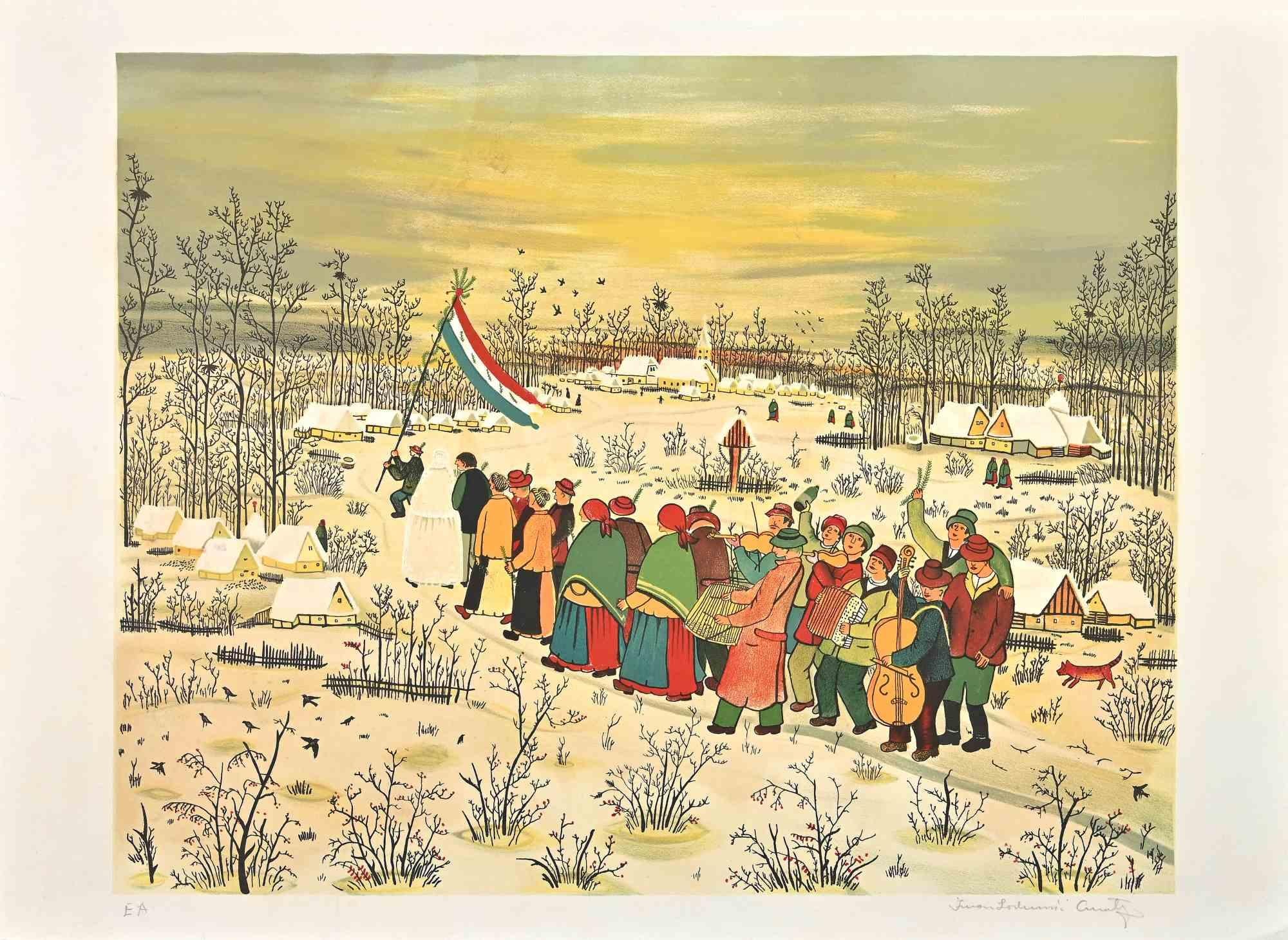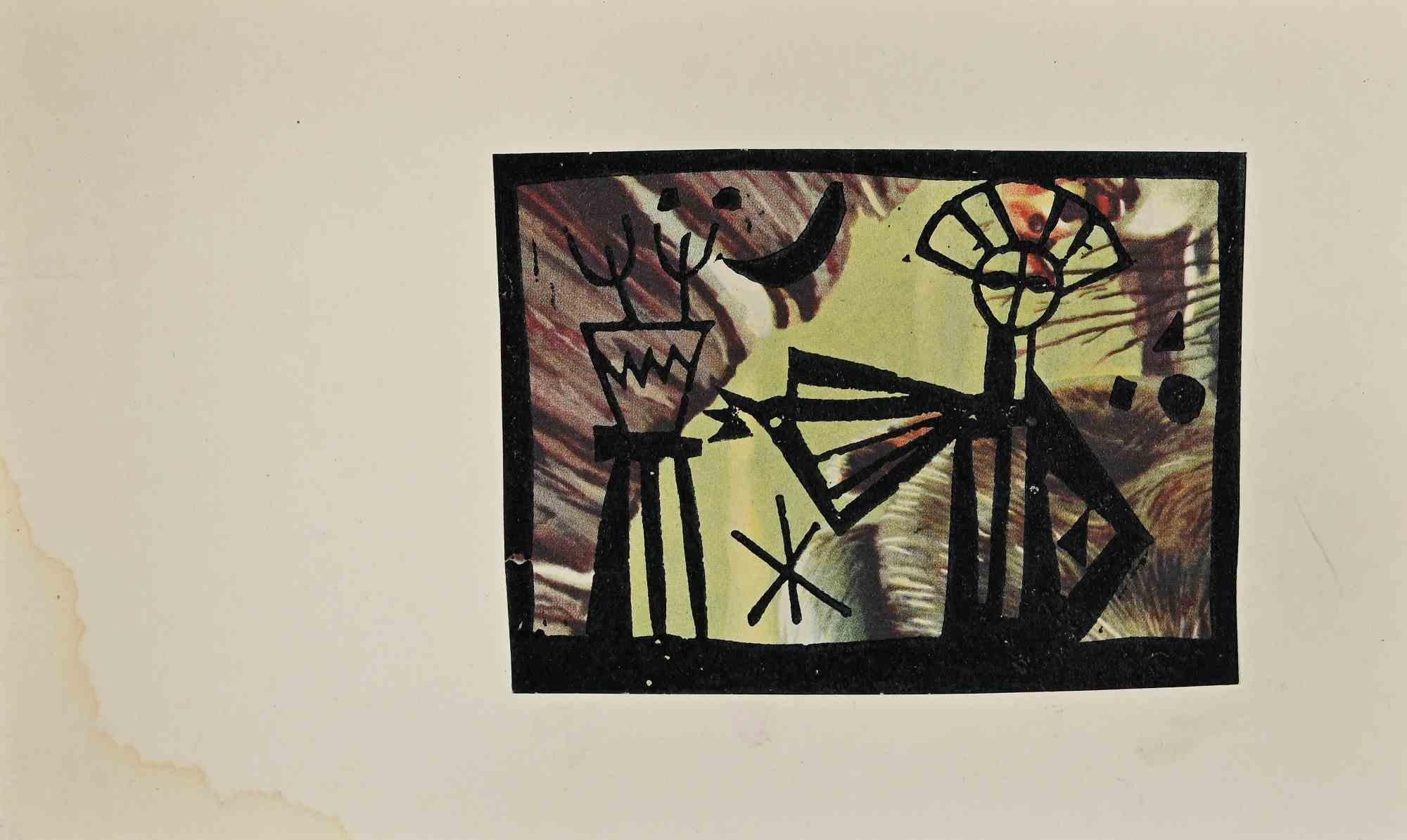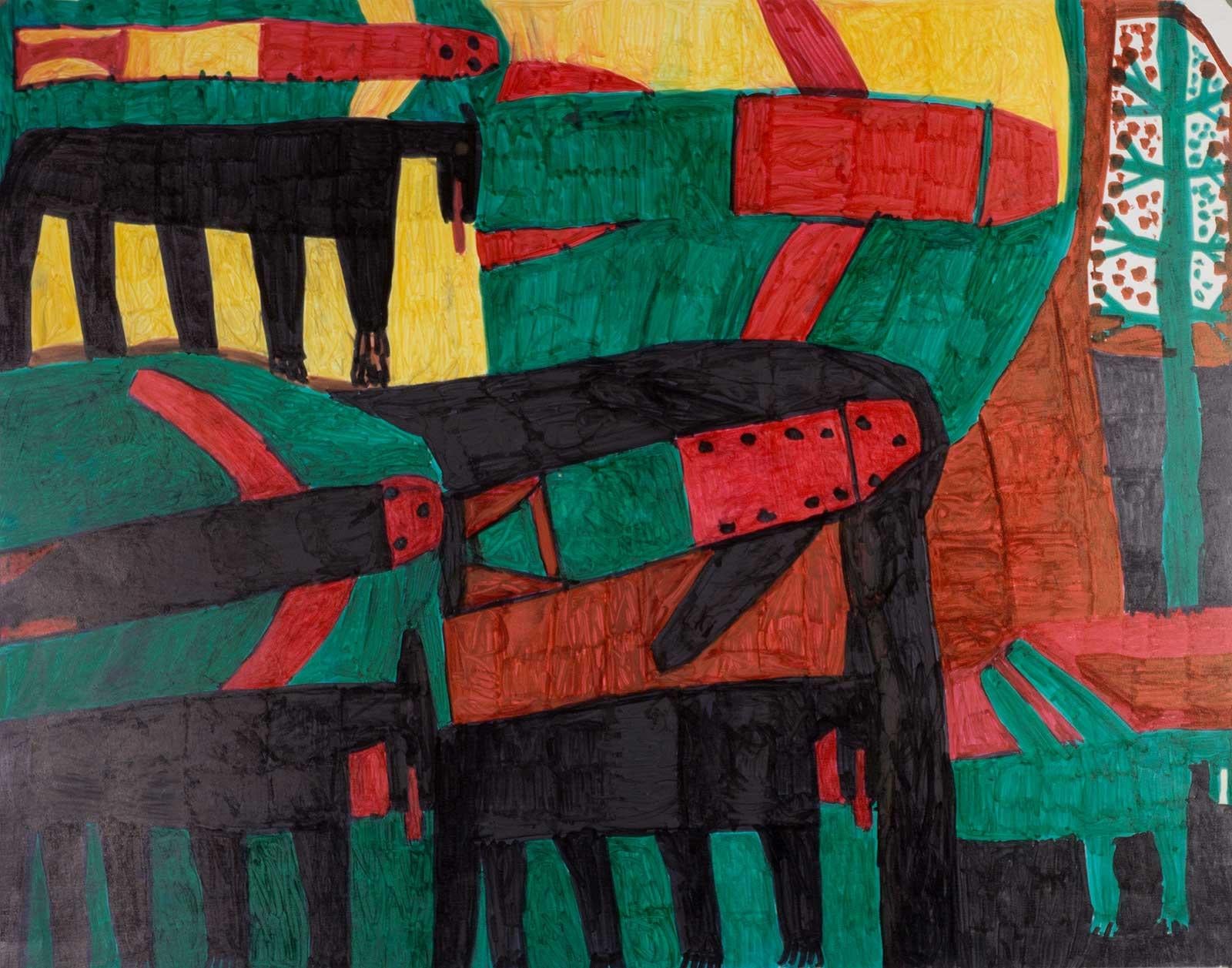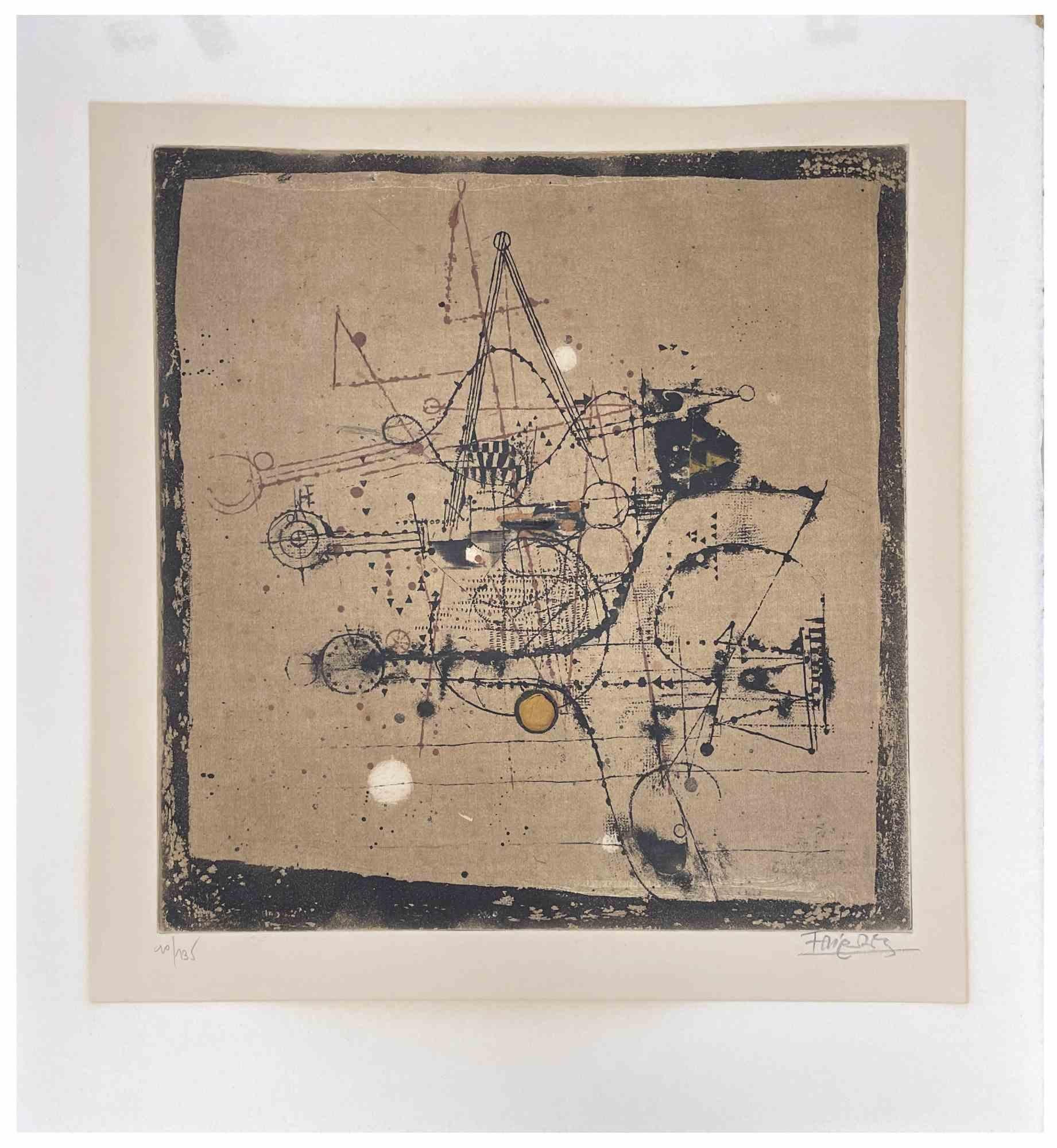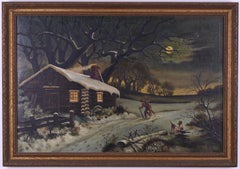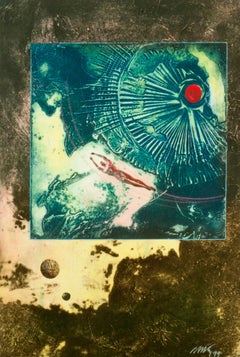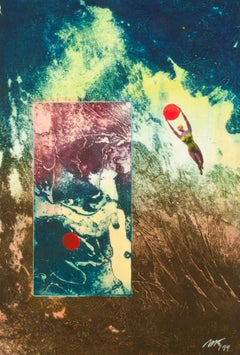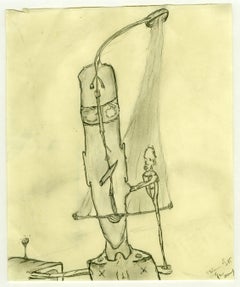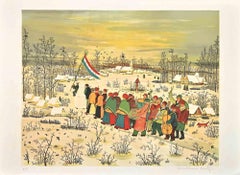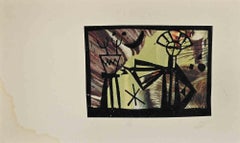Items Similar to untitled (Returning Home with Supplies)
Want more images or videos?
Request additional images or videos from the seller
1 of 9
Gustav Hagermannuntitled (Returning Home with Supplies)c. 1930
c. 1930
$500
£385.24
€440.06
CA$715.84
A$780.76
CHF 410.52
MX$9,369.52
NOK 5,183.25
SEK 4,834.56
DKK 3,286.60
About the Item
untitled (Returning Home with Supplies)
Signed in pencil by the artist lower right (see photo)
Signed by his printer, Otto Felsing lower left ((see photo)
Annotated in pencil: "In kupfer geschnitten von einen Lapplander"
Printed by Otto Felsing, one of Germany's master printers of the era
One of several engravings Hagemann made based upon actual drawings given to him by Laplanders.
Gustav Hagemann was born on February 17, 1891, in Engelnstedt, Salzgitter, Germany. Hagemann attended high school in Wolfenbüttel and studied at the art school, in Kassel, Germany. After graduating as an art teacher, he became a trainee teacher in Torgau in Saxony.
He fought in the First World War between 1914-1918. After the war he studied art from 1920, concentrating on sculpture, in Munich. In 1922 he returned to Torgau, where he was hired as an art and sports teacher. Exhibiting with the Berlin gallery Ferdinand Möller, he found a degree success beginning in 1927 and continuing until 1939 primarily with the work resulting from his yearly trips to Northern Scandinavia and Lapland. Hagemann, who had already explored East Prussia and Pomerania from Torgau, undertook four-month study trips to the countries of the North from 1926 onwards often traveling by motorcycle. Hagemann also served as a soldier in the Second World War.
He again began visiting Lapland between 1950 and 1966. Many of his early prints were done after drawing by Lapland village artists. Hagemann's art is the subject of a 1981 book entitled, Gustav Hagemann, Der Maler des Nordens. ISBN 10: 3876950260.
Gustav Hagemann died on May 24, 1982, in his hometown of Engelnstedt, Salzgitter, Germany
Courtesy Annex Galleries
- Creator:Gustav Hagermann (1891 - 1982, German)
- Creation Year:c. 1930
- Dimensions:Height: 10.13 in (25.74 cm)Width: 14.88 in (37.8 cm)
- Medium:
- Movement & Style:
- Period:
- Condition:
- Gallery Location:Fairlawn, OH
- Reference Number:Seller: FA66391stDibs: LU14013621132
About the Seller
5.0
Recognized Seller
These prestigious sellers are industry leaders and represent the highest echelon for item quality and design.
Gold Seller
Premium sellers maintaining a 4.3+ rating and 24-hour response times
Established in 1978
1stDibs seller since 2013
827 sales on 1stDibs
Typical response time: <1 hour
Associations
International Fine Print Dealers Association
- ShippingRetrieving quote...Shipping from: Fairlawn, OH
- Return Policy
More From This Seller
View AllUntitled (also known as "1811 THE BACKWOODSMAN'S CHRISTMAS")
Located in Fairlawn, OH
Untitled (also known as "1811 THE BACKWOODSMAN'S CHRISTMAS")
Oil on canvas, c. 1875-1925
Unsigned
Provenance: Found in Ohio
A charming American naive nocturn of a hunter and his two ...
Category
1870s Outsider Art Landscape Paintings
Materials
Oil
Untitled
By Mikulas Kravjansky
Located in Fairlawn, OH
Signed and dated '99
Provenance:
Touro College, NYC (accession number sticker verso)
Category
1990s Prints and Multiples
Untitled
By Mikulas Kravjansky
Located in Fairlawn, OH
Signed and dated '99 in white
Category
1990s Figurative Prints
Materials
Mixed Media
Untitled
Located in Fairlawn, OH
Bömmels belonged to the co-founders of the Cologne artist group Mülheimer Freiheit , which also included Hans Peter Adamski , Walter Dahn , Jiří Georg Dokoupil , Gerard Kever and Ger...
Category
1980s Surrealist Figurative Drawings and Watercolors
Materials
Graphite
Untitled (Abstract Animal)
By Ulfert Wilke
Located in Fairlawn, OH
Untitled (Abstract Animal)
Collage with watercolor, 1981
Signed and dated lower right (see photo)
Condition: excellent
Image size: 8 1/4 x 11 1/4 inches
Frame size: 16 1/4 x 19 1/2 ...
Category
1980s Abstract Mixed Media
Materials
Watercolor
Untitled
By Henri Goetz
Located in Fairlawn, OH
Untitled
Signed in pencil lower right (see photo)
Edition: 25 (9/25) (see photo)
Engraving, drypoint & carborundum
Printed by the artist
Condition: Excellent, slight residue on rever...
Category
1960s Abstract Expressionist Abstract Prints
Materials
Drypoint, Etching
You May Also Like
Leaving Home (97-301), 5 color lithograph on Rives BFK paper, Signed/N Tamarind
By DeLoss McGraw
Located in New York, NY
DeLoss McGraw
Leaving Home (97-301), 1997
Five color lithograph on tan Rives BFK paper with deckled edges
Signed and numbered 3/75 in graphite pencil on the front
17 × 24 3/25 inches...
Category
1990s Outsider Art Abstract Prints
Materials
Lithograph
Homage a Dito, 1982, Folk Art Woodcut by Florence Grace Putterman
By Florence Putterman
Located in Long Island City, NY
Artist: Florence Grace Putterman, American (1927 - )
Title: Homage a Dito
Year: 1982
Medium: Woodcut, signed in pencil
Edition: TP
Size: 27.5 x 39 in. (69.85 x 99.06 cm)
Category
1980s Conceptual Animal Prints
Materials
Woodcut
Landscape - Lithograph on paper by Ivan Lackovic - 1980s
Located in Roma, IT
Landscape is a Lithograph on paper realized by Ivan Lackovic in the 1980s .
Hand-signed.
Artist's proof.
Good conditions.
The artwork is depicted th...
Category
1980s Contemporary Landscape Prints
Materials
Lithograph
Composition - Original Lithograph by Andrea Preger - 20th Century
Located in Roma, IT
Composition is an Original Lithograph realized by Andrea Preger in the 20th Century.
Good conditions except for the sign of humidity that doesn't affect the artwork.
The delicate a...
Category
Mid-20th Century Surrealist Figurative Prints
Materials
Lithograph
Untitled 5 - Herd Animals
Located in New Orleans, LA
Self taught outsider art by African American artist from New Orleans with work in major museum and private collections. White created a bold c...
Category
1990s Outsider Art Animal Paintings
Materials
Foam Board, Felt Pen
$487 Sale Price
25% Off
Untitled - Etching by Johnny Friedlaender - 1970s
Located in Roma, IT
Untitled is an artwork realized by Johnny Friedlaender 1970s.
Etching on wove paper. Signed and numbered.
Edition of 135 copies.
Good conditons
Category
1970s Surrealist Abstract Prints
Materials
Etching
More Ways To Browse
African American Poster
Altman Luxembourg Lithograph
Ana Popescu
Aquatint India
Bernard Buffet Canal
Bernard Cathelin On Sale
Camilla Vintage Prints
Charon Lithograph
Childe Hassam Etching
Christo Running Fence
Christo Surrounded Islands
Christo Wrapped Trees
Eyvind Earle Serigraph
Fairfield Porter Lithograph
Grant Wood Lithographs
Harold Altman Luxembourg
Hassam Etching
Joichi Hoshi Woodblock Prints

